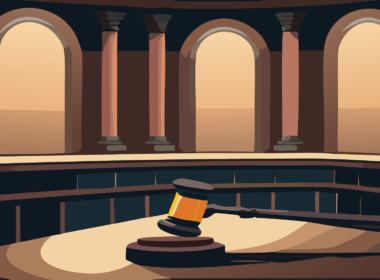My fellow Americans: what the actual fuck.
Today is a sad day for human autonomy, and we don’t feel like being nice about it. As you already know, Roe v Wade is dead. But something else also died today: whatever little trust a majority of Americans had left in the Supreme Court.
To be honest, we should have seen this coming, and I don’t just mean on Roe v Wade.
Bias, Bias, Bias
I can sit here all day and link study after study about how you’re biased; but you already knew that. Your decisions are all influenced by your own personal beliefs and world view, and they rarely take into consideration those of others.
Nobody, and nothing, is immune to human bias. It creeps into everything, even if you don’t notice it. And it is powerful—point is, this is not a new or unknown phenomenon.
Most institutions of the United States have some checks and balances against personal bias. The Office of the President of the United States, while powerful, cannot unilaterally make a vast number of decisions. The United States Congress, for all of its flaws, has to pass new legislation through two chambers and then get the President’s autograph.
But not the Supreme Court.
With virtually nobody to oppose it, and a history of becoming more politicized, the Supreme Court is a perfect environment for bias to thrive. Bias that has the power to impact your life in extreme ways.
A Flawed System From The Start
So here we have an institution that is perpetually self-confirming, and highly prone to human bias. Fantastic.
You see, it doesn’t matter how good a law you write, and it doesn’t matter how many systems of checks and balances you run it through, if ultimately the interpretation is left to a group of just nine, highly bias-prone humans. Inevitably, as it has throughout its history, this will lead to opinions and interpretations coherent with just those nine individuals, which are non-representative of the United States populace as a whole.
Throw in some life terms, a whole heap of political polarization, and we have about the worst possible system for delivering sound rulings. A system vulnerable to the whims of anyone clever enough to implant an idea in just five people.
A feat which is not as difficult as you might expect.
Ideological Tendencies
If you aren’t convinced that the system was flawed from its inception, consider the speed with which the court has flip-flopped on 50 years worth of established precedence. It isn’t a coincidence that this happened as soon as the majority dynamic shifted.
Each of the five justices in the majority of today’s decision hold an ideology: that abortion is immoral. It doesn’t make much difference for what specific reason, the simple fact they hold this ideology in the first place is enough to infect their interpretations and opinions.
The bias creep is so strong that, despite publicly claiming otherwise, Brett Kavanaugh reversed his assurances given to Senator Susan Collins, and eventually joined the other four justices in overturning Roe v Wade.
Indeed, the manifesto of the GOP aligns quite nicely with the new manifesto of the Supreme Court: historically anti LGBTQ rights, the Supreme Court now wants to end same-sex marriage; contraceptives conflict with some religious teachings, the Supreme Court is after those now, too.
But the most egregious example of this is undoubtedly the Supreme Court opinion that relations between same-sex partners being perfectly legal should be reconsidered—a dangerously slippery slope.
And as this new infusion of bias continues to permeate throughout the Supreme Court’s past and future rulings, the United States will twist and bend as it comes into focus through the lens of a new ideology, and an already fractured nation will reopen old wounds.
In truth, any argument presented by the Supreme Court for why a 50 year precedent was obliterated would merely be a cover story; nothing more than a hollow justification for aligning your world as the five majority justices see it, through their own bias and beliefs.
They publicly told us this was coming, and it was only possible because of the weak non-existent checks and balances placed on such an important institution.
A Beacon of Pain
Make no mistake: the dismantling of Roe v Wade will be seen as a direct betrayal of women’s rights by a vast majority of Americans. Women will—and rightly should—perceive this as a direct attack on their autonomy.
The decision to delete Roe v Wade won’t stop abortions for those that want one enough; but it will stop safe ones in the states that decide to, or already have, enacted legislation—especially for those less fortunate. Even worse is the reality that each and every one of those states has no laws, programs, or supporting legislation for soon-to-be parents that will assist financially or emotionally.
In some states, where there are no exceptions in the case of incest or rape, the emotional toll against the victims will be severe. Compounded with the United State’s lackluster access to mental health services, families will be left to navigate a fragmented system with virtually non-existent help.
People will suffer for what Republican justices are calling a technicality; and the Supreme Court will be seen as a beacon of pain.
All of this is their fault. Let them feel your pain.










